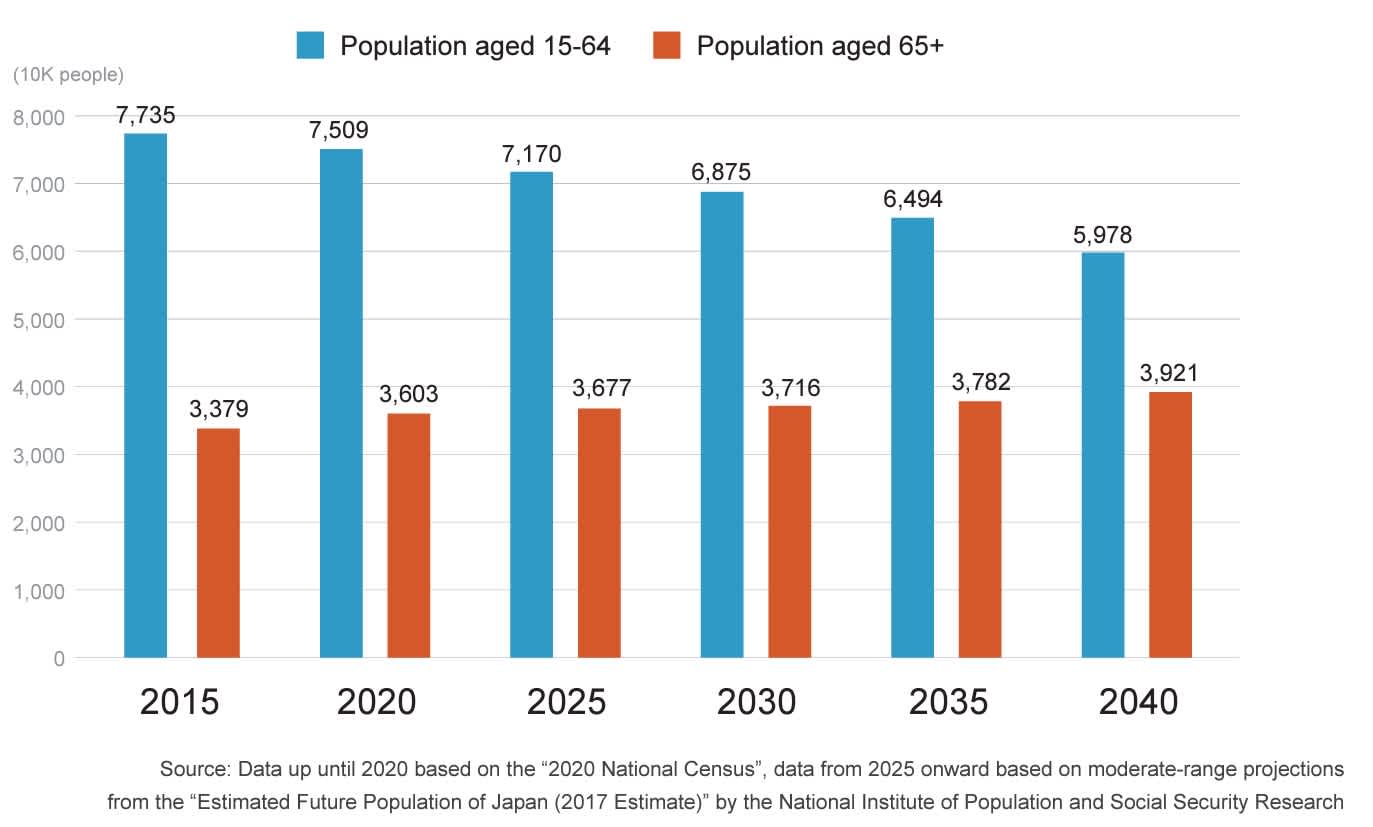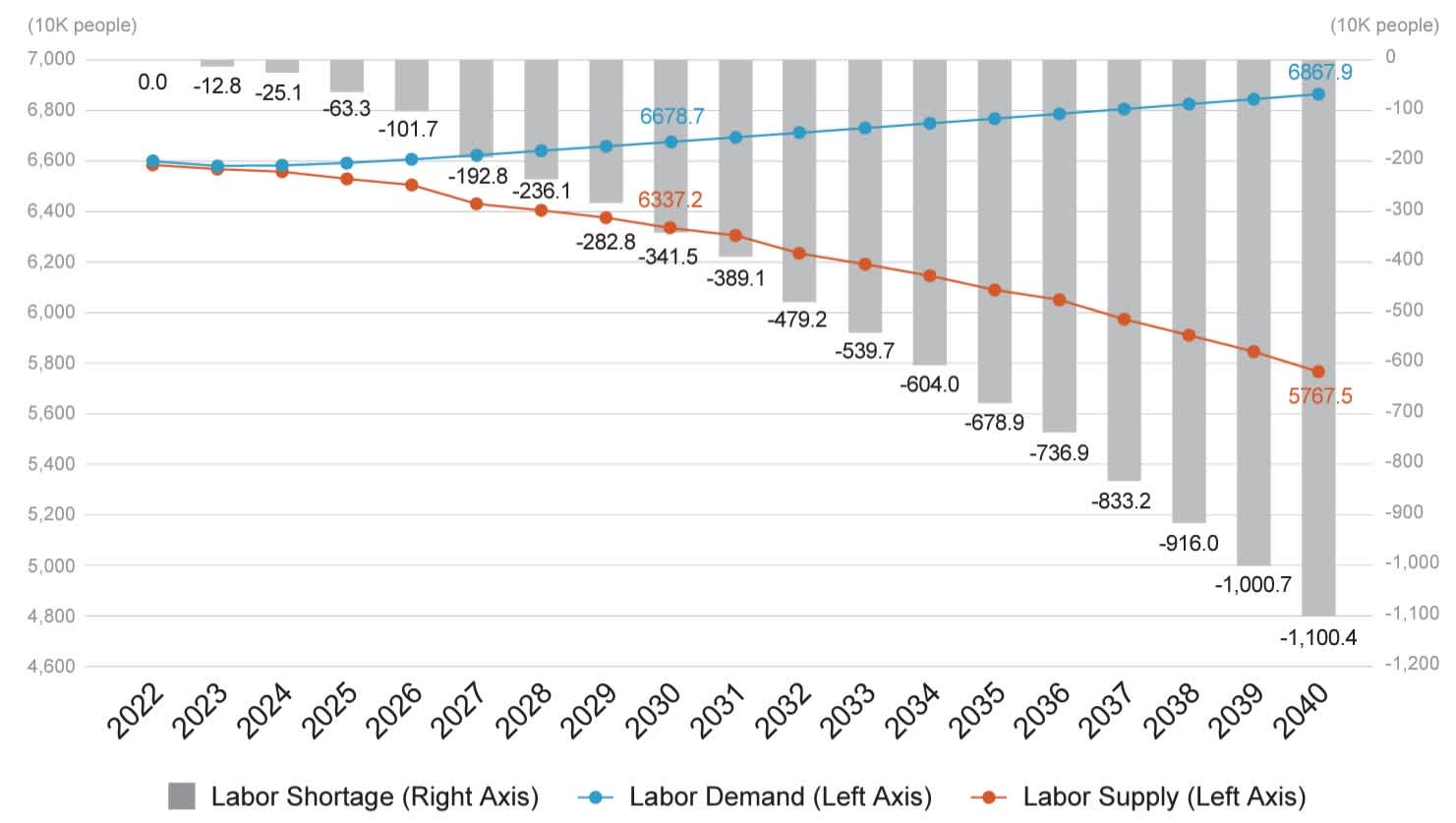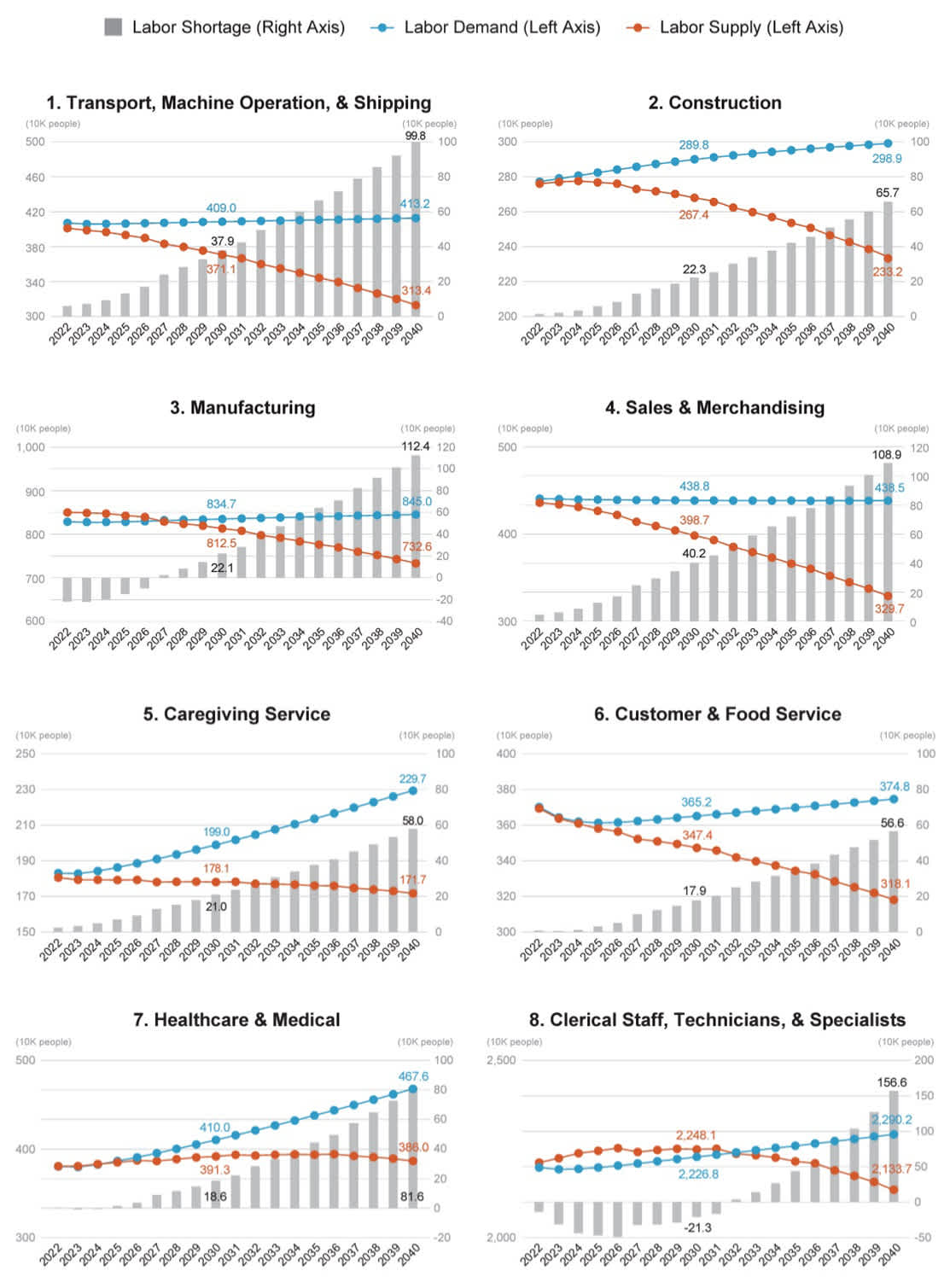Recruit Works Institute is an independent research center of Recruit Group and has conducted research on individuals and organizations for more than 20 years in Japan. Every five years, the institute presents a forecast illustrating the future of work. The "Future Forecast 2040: Japan - The Dawn of the Limited Labor-Supply Society" was released this year and has sparked discussions across various domains, including in major Japanese media broadcasts and publications. Shoto Furuya, Chief Researcher at Recruit Works Institute, explains why they chose this theme now and what kind of future Japan could face.
Recruit Works Institute, an Expert of Japanese Labor Market, Raises Alarm with its Future Forecast for 2040
Recruit Works Institute was established in 1999 with the mission to create a next-generation society where every individual can engage in productive, meaningful work. For over 20 years, the Institute, a specialized think tank focused on Japanese labor policies, labor markets, corporate hiring practices, career education, recruitment and staffing industries, as well as global labor markets, has played a crucial role in disseminating valuable information. The Institute’s research and reports are open to the public and widely trusted, serving not only job seekers, companies, and the media but also government institutions.
Recruit Works Institute publishes a forecast on the future of work approximately every five years. This year marks the fourth installment. The latest report utilizes Japan's demographic statistics to simulate the labor supply and demand trajectory until 2040, warning that Japan could become a limited labor-supply society. Shoto, Chief Researcher at Recruit Works Institute who served as the project leader, explained “We are not talking about a temporary labor shortage. We see a possibility that Japanese society will no longer be able to supply the labor force necessary to maintain the same level of essential services as before. The underlying factor is demographics: the elderly population (65+) will continue to grow until 2044, while the working-age population (15-64) will decline rapidly until 2040. As a result, Japan is likely to face a shortage of its working-age population available to meet labor demands. We consider this to be a major issue, and that is why we published a report on this topic."

Population Number Forecast for the 15-64 and 65+ Age Groups
"It is also important to note that the elderly population is highly dependent on labor-intensive essential services such as nursing care, logistics, and medical care, and these demands will remain high until early 2040s when the elderly population is estimated to reach its peak. This, combined with the decline in the number of working-age people, is causing a structural and chronic shortage of labor," Shoto added.

Simulation of Labor Supply and Demand
Since demographics do not fluctuate greatly and are the most reliable predictor of the future, this limited-labor supply society is almost an inevitable future for Japan.
The Projections Reveal a Future that Japan Could Face
If the population providing labor supply continues to decline, the gap between labor supply and demand will expand. By 2030, Japan with a population of 120 million, could face a labor supply shortage of approximately 3.41 million people, which could swell to about 11 million by 2040. This situation does not represent a temporary shortage of human resources, as seen during economic booms, but rather a persistent and structural deficiency in the labor supply. The report presents simulation results for eight occupational categories, seven of which are essential and significantly impact our lives: transportation, construction, manufacturing, sales and merchandising, caregiving, customer and food service, and healthcare. The eighth non-essential occupational type is clerical staff, technicians, and specialist occupations. As a result of these breakdowns, a multitude of possibilities emerge. For example, items you may have ordered would not be delivered or the delivery would be significantly delayed due to a shortage of drivers, or that you may have to live in unsafe conditions where roads are not maintained properly or repaired after a disaster due to a lack of construction workers. The report also highlights the potential collapse of caregiving and healthcare services due to the labor supply shortage. This could lead to scenarios where family members have to provide elderly care due to limited daycare availability, patients not able to see doctors, or hospitals not able to accept ambulances.
When Shoto visited a rural town in Japan, he witnessed the labor shortages already happening in nursing care and transportation. For instance, he observed a 70-year-old individual providing daycare service for an elderly man in his 90s, and an 86-year-old delivery worker carrying parcels. Shoto said, "There are many occupations and regions in Japan where there is not enough labor supply even now, but we are still in the early stages of a labor-supply crisis caused by demographic changes. By 2040, we can fall into a vicious circle where an increasing amount of time is dedicated to sustaining lifestyle, leaving less time for work, accelerating the shortage in labor supply.

Simulation of Labor Supply and Demand Per Occupation Type
In addition to the eight occupational types, the report also categorizes by region, which predicts all regions of Japan, except Tokyo, will face serious labor-supply shortages. Tokyo, with its high concentration of government agencies, decision-making bodies, and major corporations, is projected to sustain labor demand from 2030 to 2040. This could potentially mask the significant labor shortage experienced across the rest of Japan. "If people, especially white-collar workers, fail to promptly recognize these societal shifts taking place in Japan, it could hinder the initiation of serious discussions, even as labor-supply constraints become increasingly pervasive throughout Japan," Shoto pointed out.
What Japan Will Go Through is a Preview of What the World May Face in the Future
Across the world, population decline and aging are prevalent issues in East Asia and European countries, reflecting a global shift in demographics. Japan, currently experiencing the world’s most rapid decline in birthrates and aging population, stands at the forefront of addressing the challenges brought about by demographic shifts, which other developed countries are likely to face in the near future. In that sense, too, this future forecast report would provide important suggestions.
Recruit Works Institute proposes four potential initiatives, providing scenes from the future of Japanese society to counter the limited-labor supply. By starting these initiatives now, we will have a 10-year grace period, which will allow us time to explore fundamental solutions that address the issue at hand. Although it is difficult to stop demographic changes in society, this report indicates the need for a paradigm shift in governments, companies, and individuals. We need to think out of the box, and work from the premise of labor-supply limitations to enrich a society facing such constraints.

Shoto Furuya
Chief Researcher, Recruit Works Institute, Recruit Co., Ltd.
After graduating from Hitotsubashi University with a Master of Arts in Educational Sociology, Institute for the study of Social Sciences in 2011, Shoto started working in the Japanese Government: Ministry of Economy, Trading and Industry (METI) where he worked on producing industrial HR policies, launching investment funds, developing national growth strategies, and providing life-support programs for people affected by the Great East Japan Earthquake. In 2017, Shoto joined the Recruit Works Institute and has been studying the labor market, specializing in the younger generation and future career building.